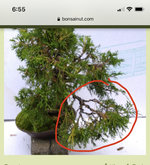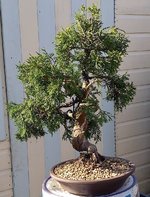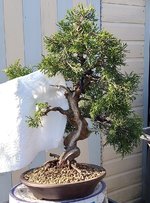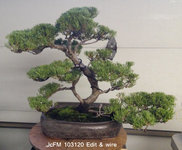You’ve gotten some pretty solid advice from a couple of great contributors to this site, which would normally lead me to zip my lip. In this case, though, I’d like to offer a second opinion.
I think if you took this tree to a workshop this fall and worked with a professional, here’s what they would do (or have you do).
First, they would inspect it for health. Given what I see, it looks healthy. Growing strong, some extensions, etc.
Then they would proceed to what you might call a structural pruning. Take a look at
@leatherback ‘s post, the real development starts not after the first series of work, but the second. That’s because structural pruning is mostly about setting the tree up for future success, than true aesthetics, which is what Leatherback does in 2017, quite nicely I should add.
Take this area here,

I don’t believe this area gets any better by doing nothing. No offense, but this is a mess

.
Every. Single. Limb. Must be cleaned and set up for success. Each spike of foliage must be given the appropriate space to grow and become strong. You cannot have great backbudding if your front-budding is a mess. They go hand in hand.
Then it must be wired to give light to all areas. From above, you must be able to see all the limbs. Nothing is hovering over anything.
This is Naka Bonsai Techniques 1 stuff. But it must be done first, if you want to see progress.
My final thought is this, the foliage might be garbage. Honestly, it might not be true Itiowaga. And you mentioned it’s a shohin, which requires great foliage to become a great tree. So grafting might be in your future. Better to do the work now, properly, and see if the tree responds as it should with shorter and tighter growth, than find out 3 years from now that grafting is in order.
Something you hear Ryan say and I’ve seen Bjorn do countless times and is always make the tree the absolute best it can be for that moment. Is this tree in the best place it can be for this moment? Move the tree along, don’t wait.
Do you have access to a workshop? Or a bonsai club, etc that you could get help with this tree? What is required right now for the tree is simple, but not easy.






















